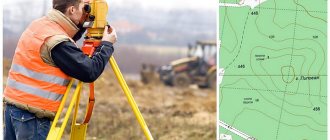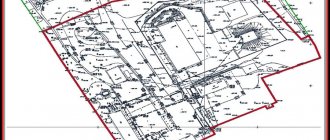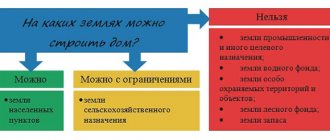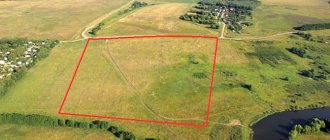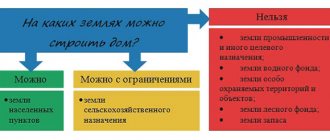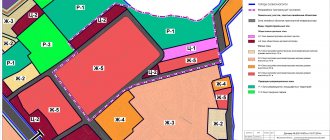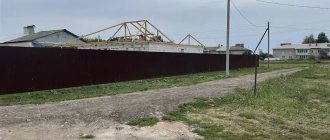The owner of the land does not always know everything about his property, as Chekhov described in detail in his disputes about the Oxen Meadows.
For a long time, all land in the Soviet Union belonged only to the state, so the history of private land ownership began only in 1991. It was then that in our country people got the opportunity to own their own land.
Unfortunately, over 27 years of a market economy, it turned out that many owners are still not ready to responsibly manage their property. In confirmation of this, there is still a huge amount of unregistered, undemarcated land in Russia. Which undoubtedly leads to disputes and misunderstandings.
Self-occupying plots. Causes and background of the problem
Like any piece of real estate, a plot of land has its own history. Once upon a time, once separated from a larger one, it received its own area and boundaries, and these data did not always coincide with what was indicated on paper.
Considering the tools and qualifications of land surveyors at that time, whose experience for a long time left much to be desired, errors in calculating the boundaries of land plots arose everywhere. At the same time, neighbors most often resolved issues on their own, either by reaching an agreement or playing dirty tricks on each other until one of them gave up.
Land plots were received from the state in different ways:
- into lifelong inheritable possession;
- for unlimited use;
- for rent.
Then they were gradually privatized. One way or another, disputes in people's courts about determining the boundaries of land plots were extremely rare; usually everything was resolved amicably, between neighbors, at most, at the level of local Soviets. And at that time land was allocated with a reserve, so as not to lead to a scandal.
Where to complain
Article 64 of the Land Code determines the consideration of issues related to land in court. Initially, the case may be considered in arbitration court.
To begin the procedure regarding the fact that access to land has been blocked for citizens or that economic activity is being conducted illegally on the site, a statement or complaint is required. Such statements are accompanied by evidence of the fact that occurred.
The court must also receive confirmation that the controversial issue has already been considered pre-trial.
The pre-trial procedure for resolving conflicts is used when establishing the boundaries of land areas subject to privatization, when resolving a dispute between municipal entities that delimit state property on land areas.
Pre-trial consideration of issues related to the location of the site allocated as a share in the compensation amount is also carried out.
If the listed issues are not resolved pre-trial, the case is sent to court. All conflicts concerning the land sector are considered in federal courts of general jurisprudence. Disputes can also be resolved by magistrates.
What is unauthorized land seizure? And how does it happen?
Unauthorized (illegal) seizure of land is an unscrupulous intentional act that is aimed solely at seizing someone else's territory that belongs to another owner.
Please note the statutory interpretation of this term, specifically that it must be an “intentional” act. If the violator proves that he “went” beyond your border by accident, it will be difficult to bring him to justice.
In general, in practice, it is quite rare to encounter completely raider situations when they seize an entire area. It's easy to detect. The most common case of squatting occurs when one neighbor illegally takes part of another neighbor's land.
If you have a dispute with a neighbor regarding the boundaries of your property, do not rush to file a lawsuit. Before going into conflict, it is important to be sure that this will not lead to the loss of your territory. We recommend that you first study in detail the history of the site and find out whether your land was seized, or whether your neighbor is taking his? You need to understand it carefully.
Kinds
Illegal possession of someone else's land property can be divided into the following types:
- Self-seizure of land or a section of it between private owners implies its willful alienation for personal use. For example: a neighbor moving a fence onto the territory of a nearby someone else’s plot or when the owners do not use their land for a long time.
- Arbitrary use of private land property by legal entities - placing their equipment on them or creating a dump for industrial waste. Neighboring land plots are subjected to such atrocities.
- Sometimes an individual, in order to obtain some benefit, tries to take over a share of land owned by an organization. But this doesn’t happen often; as a rule, legal entities fence off their territory and no one can get there without hindrance.
- Unauthorized seizure of land considered the property of the state. Russian citizens believe that they cannot face serious punishment for using such ownerless land for personal purposes.
Without the appropriate permits, conducting agricultural activities on these land shares is strictly prohibited!
Why is it important to control property boundaries?
State registration of real estate appeared only in 1998, when the corresponding law came into force. Before this, several structures were involved in land accounting: architectural departments of local administrations, land departments, and the land resources committee, as a result of which the title documents often contradicted each other.
Perhaps this is the main reason why the neighbors, desperate to get the truth, decided to take illegal actions.
If you want to avoid unauthorized seizure of land, you need to constantly monitor the location of the fence (fence), check it with a tape measure (this is not a joke). People are different. What can I say, it happens that attackers change the borders of states overnight, moving border pillars. Then what’s the problem with slightly “moving” the neighbor’s fence, a meter or two. To do everything about everything - half an hour of work.
If you discover that a neighbor has seized part of your plot, you should not rush, much less threaten. First of all, to resolve a conflict situation, you need to invite a representative of the local administration.
The official will conduct a conversation with the neighbors, ask them questions and check documents (the authorities have access to the archive of all documents, they are more informed, and can take measures to prevent a scandal).
Documentation
- identification document;
- application to the local municipality;
- plan of the desired site;
- cadastral passport;
- deed of ownership of the plot;
Papers may vary slightly by region. The exact list of documents should be checked with the local administration.
ATTENTION! It will be easier to seize territory if there is no illegal construction on someone else’s land plot.
How to confirm the boundaries of your site?
If the land conflict could not be resolved through negotiations and peaceful means, it is necessary to strengthen your position with documents. To do this you should order:
- Cadastral plan of the land plot . It contains all the most important and detailed information about the characteristics of your site;
- An extract from the Unified State Register of Real Estate , which confirms ownership of the plot;
- Extract from the Unified State Register of Real Estate for a residential building;
- Extract from the house register.
Ideally, of course, you would also invite a cadastral engineer to take measurements and draw up a boundary plan that will collect all the information: area, cadastral number, the very first and very last document confirming the rights to the site.
Now these calculations are done much more professionally than before: using a total station, satellite equipment and a laser range finder.
Pre-trial and forensic examination of the site
After the land plot has been surveyed and all supporting documents have been provided, most of the “invaders” retreat and move the fence.
However, if the neighbors continue to insist on their own, and do not vacate the territories occupied by self-seizure, the most effective solution that will eliminate the conflict with the neighbor is to sue him.
When going to court, be prepared for the fact that it will require additional verification of the data you provided. You will have to pay the costs of conducting a land survey, which includes a re-analysis of all documentation and a study of the boundaries of the land plot.
There are two types of land examinations:
- Judicial . This type includes inspections ordered and initiated by the court;
- Pre-trial . Conducted privately and at the request of the owner. This may be required when registering land, selling or buying it, as well as during any other actions with it.
If the case goes to court, you should be prepared for the fact that the conflict cannot be resolved quickly.
Land management examination is a rather complex and lengthy procedure. In addition, it is not cheap - its cost is from 20,000 rubles. in Moscow and the Moscow region. And the fact that you filed a lawsuit does not at all guarantee that the court will take your side.
However, so far, there are no other ways to establish the final truth - in 99% of cases, the court makes a decision based on the data obtained as a result of the examination.
Registration of a land plot under Art. 234 Civil Code of the Russian Federation
According to Art. 234 of the Civil Code of the Russian Federation “Acquisitive prescription”, the owner of a land plot who does not have legal rights to it, but in good faith, continuously and openly owns this land for 15 years, can become its full owner. This applies to both legal entities and individuals.
The subjects of this authority cannot be federal or local authorities, the Russian Federation or regions of the Russian Federation. Thus, on the basis provided for in Art. 234 of the Civil Code of the Russian Federation, only privately seized land plots can be registered as ownership.
There are five conditions without which it is impossible to register land, citing acquisitive prescription.
- Ownership of land for 15 years. The period is calculated from the moment the use of the land plot begins.
- Land ownership was continuous. This means that the plot has not been relinquished for 15 years. The transfer of land for temporary possession to third parties and legal succession are also taken into account (if a citizen claiming ownership has inherited the plot).
- Ownership of the plot was carried out as if it were your own. The land was used in accordance with its intended purpose and to extract all possible beneficial properties.
- The owner used the land openly. There are witnesses who can confirm the fact of use of the land plot.
- The owner used the land in good faith. This means that a citizen seized a land plot without knowing that it belonged to another person.
Ownership rights can only be recognized through acquisitive prescription through the courts. If your situation meets the above conditions, we recommend contacting a lawyer for advice and preparing a statement of claim with a package of documents.
What to do with persistent violators?
Some owners refuse to move the fence even after a court decision. Then it makes sense to contact the bailiffs.
As a rule, first, they will punish the violator with a fine for failure to comply with a court decision. If, after a series of several fines, the violator does not comply with the court order, the bailiff has the right to come to his site with a local police officer and a team of workers and forcibly move the fence to the proper place. Naturally, at his expense.
Amount of fines for unauthorized occupation of a site or part of it
Is compensation entitled for moral damage?
Yes, it is possible to get it. If you win the case, you can recover money from the offender for procedural costs.
Is it possible to get even more? Probably yes, if you have a good lawyer. But think about it, is it worth it? These are your neighbors.
Yes, perhaps they are wrong, that they went into conflict over a piece of land, brought the matter to court, lost money on it, and, probably, they are not the most adequate people. But you have to live next door to these people!
Of course, all this is not so scary if the site is used as a summer cottage. And if there is a residential building on it, used for permanent residence, do you want to have hostile neighbors nearby?
For some reason, it seems that the cause of land conflicts is much deeper than the post-Soviet confusion in laws and carelessness of owners. The root of the problem is in relationships. And the best way to prevent conflict is to get to know your neighbors, communicate and maintain relationships with them. Then any disagreements can be resolved peacefully, without financial losses or trial.
Did you find this article helpful? Please share it on social networks: Don't forget to bookmark the Nedvio website. We talk about construction, renovation, and country real estate in an interesting, useful and understandable way.
What fine can be imposed?
The fine for land squatting is provided for in Art. 7.1 Code of Administrative Offences. If the cadastral value of a land plot is determined, its size is:
- for ordinary citizens - 1-1.5% of the cadastral value of the land plot, but not less than 5 thousand rubles;
- for officials - 1.5-2% of the cadastral value of the site, but not less than 20 thousand rubles;
- for legal entities - 2-3% of the cadastral value of the site, but not less than 100 thousand rubles.
If the cadastral value of the plot is not determined, the amount of the fine is as follows:
- for ordinary citizens – 5-10 thousand rubles;
- for officials – 20-50 thousand rubles;
- for legal entities – 100-200 thousand rubles.
In addition, the court may recognize that the appropriation and use of the site was associated with other offenses, including criminal ones. For example, fraud or arbitrariness. In these cases, the offender faces a more severe punishment, including imprisonment.
If buildings were erected on the seized land, the violator will be obliged to demolish them and restore the territory to its original condition.

